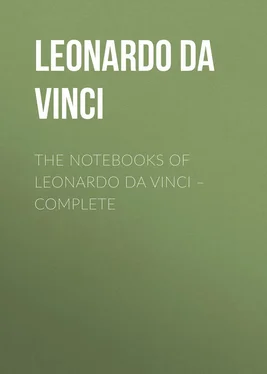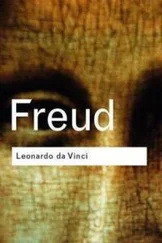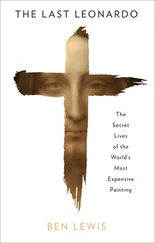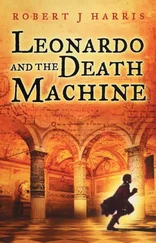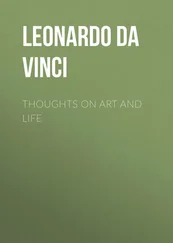Leonardo da Vinci - The Notebooks of Leonardo Da Vinci. Complete
Здесь есть возможность читать онлайн «Leonardo da Vinci - The Notebooks of Leonardo Da Vinci. Complete» — ознакомительный отрывок электронной книги совершенно бесплатно, а после прочтения отрывка купить полную версию. В некоторых случаях можно слушать аудио, скачать через торрент в формате fb2 и присутствует краткое содержание. Жанр: foreign_prose, foreign_home, visual_arts, foreign_antique, на английском языке. Описание произведения, (предисловие) а так же отзывы посетителей доступны на портале библиотеки ЛибКат.
- Название:The Notebooks of Leonardo Da Vinci. Complete
- Автор:
- Жанр:
- Год:неизвестен
- ISBN:нет данных
- Рейтинг книги:3 / 5. Голосов: 1
-
Избранное:Добавить в избранное
- Отзывы:
-
Ваша оценка:
- 60
- 1
- 2
- 3
- 4
- 5
The Notebooks of Leonardo Da Vinci. Complete: краткое содержание, описание и аннотация
Предлагаем к чтению аннотацию, описание, краткое содержание или предисловие (зависит от того, что написал сам автор книги «The Notebooks of Leonardo Da Vinci. Complete»). Если вы не нашли необходимую информацию о книге — напишите в комментариях, мы постараемся отыскать её.
The Notebooks of Leonardo Da Vinci. Complete — читать онлайн ознакомительный отрывок
Ниже представлен текст книги, разбитый по страницам. Система сохранения места последней прочитанной страницы, позволяет с удобством читать онлайн бесплатно книгу «The Notebooks of Leonardo Da Vinci. Complete», без необходимости каждый раз заново искать на чём Вы остановились. Поставьте закладку, и сможете в любой момент перейти на страницу, на которой закончили чтение.
Интервал:
Закладка:
71
HOW THE IMAGES OF OBJECTS RECEIVED BY THE EYE INTERSECT WITHIN THE CRYSTALLINE HUMOUR OF THE EYE.
An experiment, showing how objects transmit their images or pictures, intersecting within the eye in the crystalline humour, is seen when by some small round hole penetrate the images of illuminated objects into a very dark chamber. Then, receive these images on a white paper placed within this dark room and rather near to the hole and you will see all the objects on the paper in their proper forms and colours, but much smaller; and they will be upside down by reason of that very intersection. These images being transmitted from a place illuminated by the sun will seem actually painted on this paper which must be extremely thin and looked at from behind. And let the little perforation be made in a very thin plate of iron. Let a b e d e be the object illuminated by the sun and o r the front of the dark chamber in which is the said hole at n m . Let s t be the sheet of paper intercepting the rays of the images of these objects upside down, because the rays being straight, a on the right hand becomes k on the left, and e on the left becomes f on the right; and the same takes place inside the pupil.
[Footnote: This chapter is already known through a translation into French by VENTURI. Compare his ' Essai sur les ouvrages physico-mathématiques de L. da Vinci avec des fragments tirés de ses Manuscrits, apportés de l'Italie. Lu a la premiere classe de l'Institut national des Sciences et Arts.' Paris, An V (1797).]
The practice of perspective (72. 73).
72
In the practice of perspective the same rules apply to light and to the eye.
73
The object which is opposite to the pupil of the eye is seen by that pupil and that which is opposite to the eye is seen by the pupil.
Refraction of the rays falling upon the eye (74. 75)
74
The lines sent forth by the image of an object to the eye do not reach the point within the eye in straight lines.
75
If the judgment of the eye is situated within it, the straight lines of the images are refracted on its surface because they pass through the rarer to the denser medium. If, when you are under water, you look at objects in the air you will see them out of their true place; and the same with objects under water seen from the air.
The intersection of the rays (76-82).
76
The inversion of the images.
All the images of objects which pass through a window [glass pane] from the free outer air to the air confined within walls, are seen on the opposite side; and an object which moves in the outer air from east to west will seem in its shadow, on the wall which is lighted by this confined air, to have an opposite motion.
77
THE PRINCIPLE ON WHICH THE IMAGES OF BODIES PASS IN BETWEEN THE MARGINS OF THE OPENINGS BY WHICH THEY ENTER.
What difference is there in the way in which images pass through narrow openings and through large openings, or in those which pass by the sides of shaded bodies? By moving the edges of the opening through which the images are admitted, the images of immovable objects are made to move. And this happens, as is shown in the 9th which demonstrates: [Footnote 11: per la 9a che dicie . When Leonardo refers thus to a number it serves to indicate marginal diagrams; this can in some instances be distinctly proved. The ninth sketch on the page W. L. 145 b corresponds to the middle sketch of the three reproduced.] the images of any object are all everywhere, and all in each part of the surrounding air. It follows that if one of the edges of the hole by which the images are admitted to a dark chamber is moved it cuts off those rays of the image that were in contact with it and gets nearer to other rays which previously were remote from it &c.
OF THE MOVEMENT OF THE EDGE AT THE RIGHT OR LEFT, OR THE UPPER, OR LOWER EDGE.
If you move the right side of the opening the image on the left will move [being that] of the object which entered on the right side of the opening; and the same result will happen with all the other sides of the opening. This can be proved by the 2nd of this which shows: all the rays which convey the images of objects through the air are straight lines. Hence, if the images of very large bodies have to pass through very small holes, and beyond these holes recover their large size, the lines must necessarily intersect.
[Footnote: 77. 2. In the first of the three diagrams Leonardo had drawn only one of the two margins, et m .]
78
Necessity has provided that all the images of objects in front of the eye shall intersect in two places. One of these intersections is in the pupil, the other in the crystalline lens; and if this were not the case the eye could not see so great a number of objects as it does. This can be proved, since all the lines which intersect do so in a point. Because nothing is seen of objects excepting their surface; and their edges are lines, in contradistinction to the definition of a surface. And each minute part of a line is equal to a point; for smallest is said of that than which nothing can be smaller, and this definition is equivalent to the definition of the point. Hence it is possible for the whole circumference of a circle to transmit its image to the point of intersection, as is shown in the 4th of this which shows: all the smallest parts of the images cross each other without interfering with each other. These demonstrations are to illustrate the eye. No image, even of the smallest object, enters the eye without being turned upside down; but as it penetrates into the crystalline lens it is once more reversed and thus the image is restored to the same position within the eye as that of the object outside the eye.
79
OF THE CENTRAL LINE OF THE EYE.
Only one line of the image, of all those that reach the visual virtue, has no intersection; and this has no sensible dimensions because it is a mathematical line which originates from a mathematical point, which has no dimensions.
According to my adversary, necessity requires that the central line of every image that enters by small and narrow openings into a dark chamber shall be turned upside down, together with the images of the bodies that surround it.
80
AS TO WHETHER THE CENTRAL LINE OF THE IMAGE CAN BE INTERSECTED, OR NOT, WITHIN THE OPENING.
It is impossible that the line should intersect itself; that is, that its right should cross over to its left side, and so, its left side become its right side. Because such an intersection demands two lines, one from each side; for there can be no motion from right to left or from left to right in itself without such extension and thickness as admit of such motion. And if there is extension it is no longer a line but a surface, and we are investigating the properties of a line, and not of a surface. And as the line, having no centre of thickness cannot be divided, we must conclude that the line can have no sides to intersect each other. This is proved by the movement of the line a f to a b and of the line e b to e f , which are the sides of the surface a f e b . But if you move the line a b and the line e f , with the frontends a e , to the spot c , you will have moved the opposite ends f b towards each other at the point d . And from the two lines you will have drawn the straight line c d which cuts the middle of the intersection of these two lines at the point n without any intersection. For, you imagine these two lines as having breadth, it is evident that by this motion the first will entirely cover the other—being equal with it—without any intersection, in the position c d . And this is sufficient to prove our proposition.
Читать дальшеИнтервал:
Закладка:
Похожие книги на «The Notebooks of Leonardo Da Vinci. Complete»
Представляем Вашему вниманию похожие книги на «The Notebooks of Leonardo Da Vinci. Complete» списком для выбора. Мы отобрали схожую по названию и смыслу литературу в надежде предоставить читателям больше вариантов отыскать новые, интересные, ещё непрочитанные произведения.
Обсуждение, отзывы о книге «The Notebooks of Leonardo Da Vinci. Complete» и просто собственные мнения читателей. Оставьте ваши комментарии, напишите, что Вы думаете о произведении, его смысле или главных героях. Укажите что конкретно понравилось, а что нет, и почему Вы так считаете.
